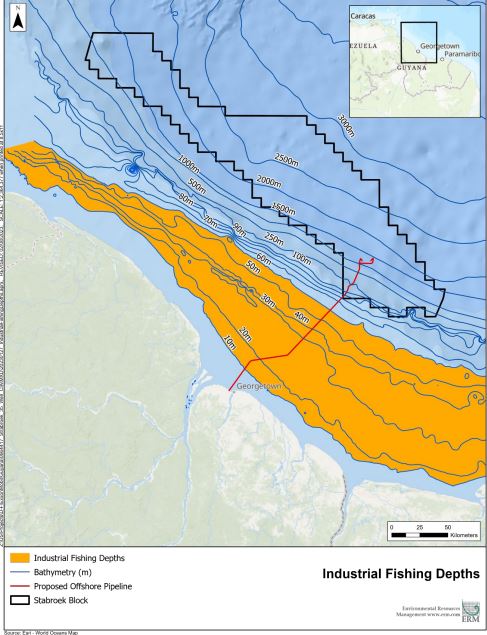ExxonMobil Guyana’s proposed 35-well campaign for the Stabroek Block is expected to have little to no adverse impacts on the nation’s fishing industry.
In fact, Exxon’s Cumulative Impact Assessment (CIA) Report by ERM Guyana Inc. notes that the nation’s current fishing activities (both industrial and artisanal) rarely occur as far as the Stabroek Block.
This was confirmed by ERM last November with three of the largest commercial fishing companies here. The survey was conducted to address, among other matters, concerns that Exxon’s accelerated offshore activities could have a detrimental impact on the nation’s fisheries industry.
Exxon’s massive 35-well campaign set to ramp up Guyana reserves | OilNOW
The results of that survey indicate that this is not the case. The document states that fishing fleets for large operators range from around 15 to 35 vessels per company, although the number of vessels at sea on a given day is significantly lower (around 10 to 20 vessels per company). These vessels fish between approximately 12 and 30 meters of water depth, with the exception of one drift seine vessel that fishes up to approximately 60 meters deep.

Exxon’s CIA said these depths in relation to the Stabroek Block, clearly show that industrial fishing activity does not intersect with operations in the heart of the oil-rich concession. Be that as it may, the assessment still conservatively assumes that some commercial fishing vessels may approach the southern boundary of the Stabroek Block. Should this occur, the CIA report states that they are unlikely to occur in the vicinity of the project’s proposed activities.
Decline in fish catch started in 2013 due to depletion/migration of stock – Report | OilNOW
It was also noted that the project, which remains under review by the Environmental Protection Agency (EPA), will discharge several effluent streams into the sea. OilNOW understands that these include water-based drilling fluids and cuttings. Though this will occur, the document states that fish that pass through the mixing zone surrounding the drillships will be temporarily exposed to elevated concentrations of various constituents in routine discharges. It states that the impacts of these constituents on these fish could manifest in several ways, such as elevated metabolic rates and/or gill or skin irritation. It stressed however that these effects are generally expected to be temporary and to abate once the fish exits the mixing zone.
Exxon has committed in the document to be compliant with safe maritime practices and communication protocols which are well established in Guyana.
The oil producer said it will work with the Maritime Administration Department (MARAD) and other relevant authorities (if applicable) to issue notices to mariners alongside other actions to ensure industrial fishing stakeholders are informed of offshore activities and associated navigation requirements or restrictions.



